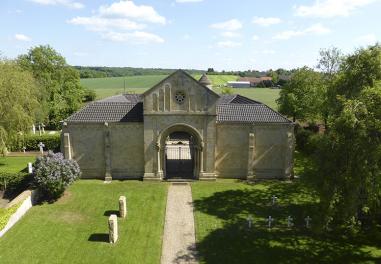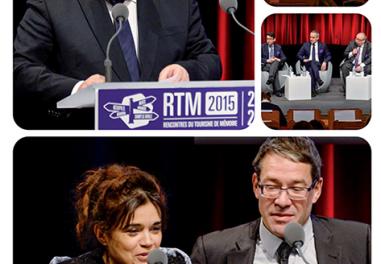Remembering the deported
Established at one end of the Île de la Cité in Paris, behind the apse of Notre-Dame Cathedral, the Deportation Memorial has benefited from an enormous programme of restoration. Its new content is to be inaugurated in April 2016, on the occasion of the National Day of Remembrance of the Deportation.
"Evoking the long ordeal of attrition, genocide and degradation" Such was the intention of the architect Georges-Henri Pingusson when he imagined this memorial in the heart of the capital in 1960, nestling just below the Square de l'Île-de-France. A sacred place in the national consciousness, inaugurated on 12 April 1962 by General de Gaulle, the monument is dedicated to the memory of those deported from France between 1941 and 1944. It evokes the suffering of the deported. Through its architecture, the memorial suggests the world of the concentration camp with its tight passages, narrow staircases, its heavy walls and spiked portcullis. In this timeless space, where the eye is deprived of a horizon, visitors may feel a "profound and implacable sensation of oppression".
The memorial is also the culmination of the annual commemoration known as the National Day of Remembrance of the Deportation. In 2015, during the ceremony of relighting the memorial flame, the Prime Minister, accompanied by the Secretary of State for War Veterans and Remembrance, presided over the reopening of the memorial at the end of a ten-month programme of renovation. Significant building restoration works had been completed, under the supervision of the Chief Architect at the Department of Historical Monuments. The head of the government was then to announce the continuation of works to encompass a "significant museographical project".
In the exhibition halls of the upper level of the memorial, new exhibition has been designed which is at once sober, modern and educational. The aim is to offer the public a means of understanding the Deportation which respects the original spirit of the monument as Pingusson conceived it, which honoured emotion and remembrance.
The visitor route will show the nature of horror and struggle in the indescribable nightmare world of the concentration camps. It will also recall the history of the memorial, from its inception to its inauguration in 1962, and the layout of its various exhibition spaces.
The lower section of the memorial is now open to the public. Visitors reach it by a narrow, straight staircase which leads to a triangular courtyard surrounded by heavy walls. From there the "initiation route" is followed by a tight passage leading to the crypt. Inside are buried the mortal remains of an unknown deportee who died in the camp of Neustadt. They were transferred here in 1962 from the former concentration camp of Natzweiler-Struthof in Alsace, the other principal national place of remembrance dedicated to the Deportation. A long gallery descends into the depths, lined with facets of crystal symbolising the tens of thousands of deportees who disappeared into the Nazi camps. Extracts of poems by Robert Desnos (who died in the camp of Theresienstadt in 1945), Louis Aragon, Paul Eluard and Antoine de Sainte-Exupéry spill onto the walls of the crypt.
In and around the Île-de-France there are other places to discover, dedicated to remembering the history of repression and deportation: The Fighting France Memorial at Mont-Valérien in Suresnes, another important site in the nation's memory, the former deportation train station in Bobigny, the internment and deportation memorial at Royallieu camp in Compiègne and the Shoah Memorial in Paris and Drancy.
Read more
Deportation Memorial
Square de l'Île de France, Paris, 4th arrondissement - Tel.: 01 46 33 87 56
Online journal
Articles of the review
-
The file

Remembrance tourism, a national issue
Remembrance tourism is a major issue for the State and especially for the Ministry of Defence: a civic and educational element crucial to pass the memorial heritage on to the younger generations, a cultural and tourism issue also in order to preserve historical testimony and develop the territories....Read more -
The event

The Remembrance Tourism Meetings 2015
Read more -
The interview
Christian Berger
Director of tourism for the Nord-Pas-de-Calais region, Christian Berger promotes remembrance sites in the region on a national and international level. A land of battles and fighting in the past, the Nord-Pas-de-Calais region today is a land of history, heritage and culture.
Read more

